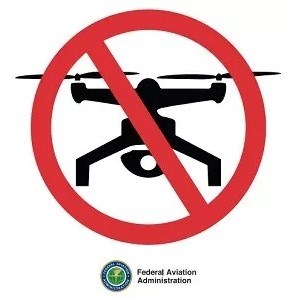
NPS/Josh Spice UPDATE 3/19/2025On January 4, 2025, the EXPLORE Act was signed into law (Public Law 118-234) and has been codified at 54 U.S.C. 100905. Section 125 of the Act changed how the National Park Service will manage filming, photography, and audio recording in park area.
Permits and fees are never required for filming, still photography, or audio recording that is associated with an activity or event that has been authorized under a written instrument (e.g., permit or agreement), such as a wedding, sporting event, demonstration or other activity. All filming, still photography, and audio recording is treated the same under the new law. It does not matter whether it is commercial, non-commercial, for content creation, by a student, or conducted by media or for news gathering. When a filming, still photography, or audio recording permit is required, the National Park Service will charge location fees and fees to recover its costs to administer the permit, including application fees. Individuals and groups conducting filming, still photography, or audio recording remain subject to all other laws and regulations applicable to visitors to park areas, including those requiring permits for certain activities (e.g., special events or demonstrations) and those prohibiting disturbance or other negative impacts to natural or cultural resources. Individuals and groups conducting filming, still photography, or audio recording are subject to entrance and/or recreation fees that may apply in park areas even when a permit is not required. 
No Drone ZoneLaunching, landing or operating unmanned or remote controlled aircraft in Cape Krusenstern is prohibited.Department of the Interior Secretary's Order 3379 mandates a cessation of all non-emergency unmanned aircraft. This order supercedes any existing regulations as of January 29, 2020 and will remain in effect until further notice. Unmanned Aircraft defined: The term "unmanned aircraft" means a device that is used or intended to be used for flight in the air without the possibility of direct human intervention from within or on the device, and the associated operational elements and components that are required for the pilot or system operator in command to operate or control the device (such as cameras, sensors, communication links). This term includes all types of devices that meet this definition (e.g., model airplanes, quadcopters, drones) that are used for any purpose, including for recreation or commerce. 
Filming in Wilderness AreasMuch of Cape Krusenstern National Monument is eligible for eligible for wilderness designation in the future (see map). According to National Park Service Wilderness Management Policies, eligible wilderness is managed as designated until it is either officially designated, or removed from consideration, both of which require an Act of Congress. Filming and photography activities must follow all applicable laws and policies to preserve their wilderness character for future generations. Filming activities in wilderness areas must follow all applicable laws and regulations that govern wilderness areas in the park.
Please contact us for more information regarding filming in a Wilderness area. Is a permit needed for Still PhotographyNo, provided the filming, still photography, or audio recording activity involves eight or fewer individuals and meets all of the following conditions:
Still Photography Workshops & ToursA commercial use authorization is required for photography workshops and tours. What fees will I have to pay?When a permit is required, the National Park Service will charge location fees and fees to recover its costs to administer the permit, including application fees. RestrictionsDrone Use: Launching, landing, or operating of drones (i.e., unmanned aircraft) from or on lands and waters administered by the National Park Service is prohibited except as approved in writing by the superintendent. How to ApplyFor futher inquiries or if you believe your activity requires a permit, email the park. For More InformationPermit Coordinator
Looking for a different kind of use permit? See the options below.
|
Last updated: July 14, 2025
